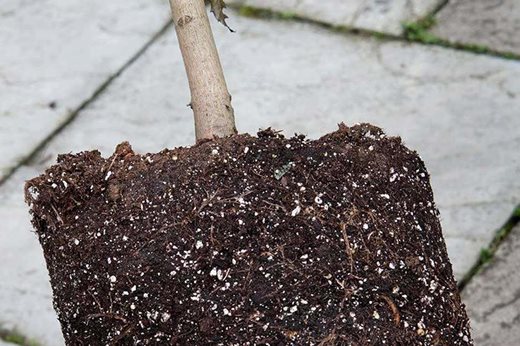There are rootstocks available that make fruit trees suitable for any garden. Follow our simple guide to selecting the right one for you
 Although fruit trees can be grown on their own roots, they are more often than not grafted onto a chosen rootstock (part of tree which includes the roots and the lower part of the trunk).
Although fruit trees can be grown on their own roots, they are more often than not grafted onto a chosen rootstock (part of tree which includes the roots and the lower part of the trunk).
The rootstock will control the rate of growth of the tree, so you can choose a rootstock to produce a tree suitable for the position in which you plan to grow it.
You can choose rootstocks from those that produce large trees which are classed as vigorous, to those that produce much smaller trees (more suitable for training as a bush or even growing in containers) called dwarfing. Soil type also influences growth rate, with light sandy or chalky soils limiting growth more than clay-based ones.
As well as controlling height, a rootstock will also ensure that the tree comes into fruiting earlier in its life than if it was grown on its own roots.
Apples
There are many different rootstocks available for apples. The most widely available apple rootstocks are called 'M27', 'M9' and 'M26', and 'M106', producing trees of 1.5-1.8m (5-6ft), 2.4-3.6m (8-12ft) and 3.6-5.4m (12-18ft) tall respectively.
Pears
'Quince A' is the most common rootstock for pears and will produce a tree between 3-6m (10-20ft). 'Quince C' is less common and produces a tree growing to 3-5m (10-16ft). Pears on 'Quince C' are slightly quicker to produce fruit.
Plums & gages
There are a couple of different rootstocks for plums. ‘Pixy’ is semi-dwarfing, ideal for pyramids and fans; ‘Ferlenain’ is similar to 'Pixy'; ‘St Julien A’ is semi-vigorous, useful for larger pyramids and fans; and ‘Brompton’ is vigorous and generally produces a tree up to 6m (20ft) tall.
Cherries
The most commonly used rootstock for cherries is semi-vigorous 'Colt', which will restrict growth to about 6-8m (20-27ft). Semi-dwarfing rootstocks 'Gisela 5' and 'Tabel' will restrict the size to about 3-4m (10-13ft) making them suitable for growing as dwarf bush trees or possibly in a container.
RHS advice on choosing rootstocks

